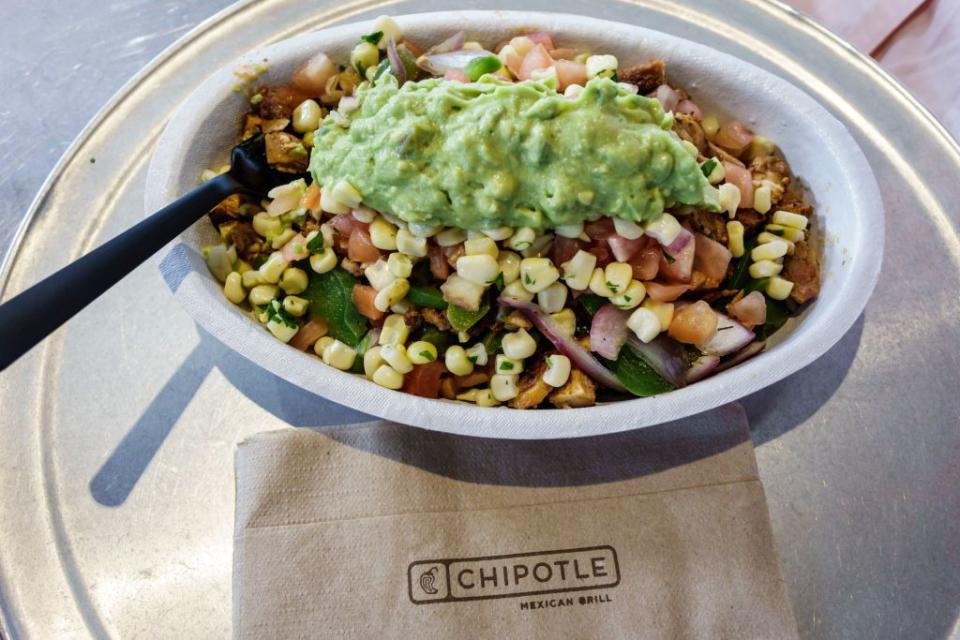Chipotle's Compostable Bowls Contain 'Forever Chemicals' Linked to Cancer, Study Says
The rise of fast-casual restaurants like Chipotle and Sweetgreen include products and buzzwords that make us feel better about eating there, compared with older fast-food spots. Their food is higher quality, less processed, less preserved and frozen, and more vegetable-based. And as part of that branding, these restaurants—along with grocers like Whole Foods—opt for a particular material in their take-out containers called molded fiber.
These bowls, typically a light tan color, are widely advertised as compostable. They’re made from plants—often even parts of plants that would normally go to waste—and they are compostable. But a huge new investigation from New Food Economy reveals that these bowls might be harmful to you and to the environment.
Molded fiber bowls are made from a variety of plants, but most often bagasse, which is what’s left of the sugarcane plant after it’s been squeezed for its juice. These bowls have come to replace the styrofoam clamshell, now banned in many major cities. But now we're learning about a variety of problems with these bowls, as New Food Economy finds. The first is a group of chemical compounds called PFAS, which stands for perfluorinated alkylated substances.

Image courtesy of Getty.
PFAS are made of fantastically strong chemical bonds, which allow them to protect more delicate substances (like paper or other fiber-based materials) from heat, acid, and liquid. They’re the reason a molded fiber bowl doesn’t break down and spill your Chipotle bowl all over your lap. But they also have a nickname: “forever chemicals.”
Related: A New Study Predicts Oceans Will Turn Brighter Blue—Here’s Why
Because PFAS are so tough, they also do not break down. That means a Chipotle bowl can be tossed in the compost, and the fiber itself will break down, but the PFAS will remain intact, essentially forever. They can remain in the compost after the material around it has been fully decomposed, and could end up spread on crops, where the crops will absorb the chemicals. They’ve been found in food ranging from fresh produce to packaged chocolate cake.
They can also make their way into the water supply. As an interesting note, some PFAS have been banned from American manufacturing, and the banned ones often have a structure that allows them to be caught in drinking water treatment systems. But the ones used in these bowls? Those are legal, but there’s also no way for municipal water plants to screen them out. The bowls have, essentially, been poisoning our food and water supply.
The obvious question here is, well, what’s so bad about these chemicals? Research on the legal varieties of PFAS is scarce, but studies have said that “effective regulation is urgently needed.” Some research on lab animals has indicated that some of these legal PFAS may cause cancerous tumors in the liver, pancreas, and testicles, and are also associated with developmental issues like low birth weight.
Information on the exact ways these new PFAS affect human health is limited, but not encouraging; don’t assume that a lack of conclusions means those conclusions will be good. And we do know that the new PFAS stay in the human body for a long time, perhaps for months, and that they can build up in the body. If you eat out of these containers regularly, you’re adding more and more of these chemicals to your body. Or, given that they’re often composted, you might be consuming PFAS through your food and water, no matter what kind of bowl you use.
New Food Economy says companies who use these bowls have varying levels of awareness of the problem, but they aren’t breaking the law currently, and so don’t have a pressing reason to change. In the meantime, be aware of how often you eat out of these bowls.

